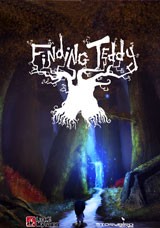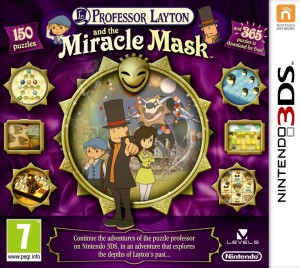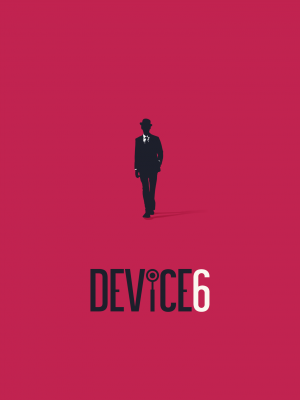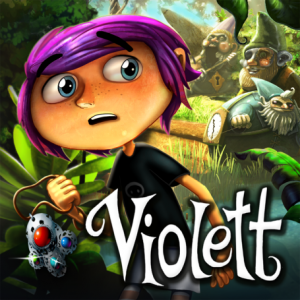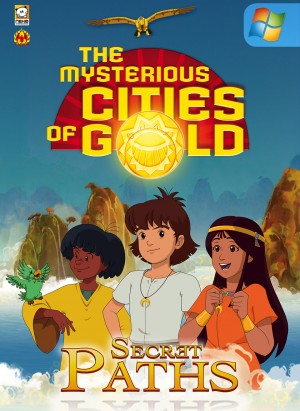Review for FRACT OSC

A few years ago a student project called FRACT was circulating around the internet, and those who stumbled across its free download were, like myself, stunned by its ambition. With original art design of vibrant, pulsating color, a handful of interesting game mechanics, and otherworldly exploration reminiscent of the finest first-person adventures, FRACT already had all the makings of one of the most memorable and outlandish adventure experiences imaginable. Two years later, that project has evolved into its full actualization: FRACT OSC, a wonderful game that’s been transformed so much from its predecessor that I actually had no idea where to begin or even how.
Make no mistake: FRACT OSC is one hell of an abstract game. Merely getting your head around this mind-bending experience is a large part of its challenge – and good luck trying to explain it to a friend. Not unlike Myst, FRACT OSC drops you straight into its world without any explanation or helpful instruction, unapologetically demanding a high level of exploration and experimentation to proceed. This desolate world, however, was originally created with sound, and rebuilding its long-dormant machinery will require you to do the same.
Even figuring out how to interact with the world is not a straightforward ordeal. In the early going I wasn’t sure if the game was working correctly because I was so confused about what I was supposed to be doing and how anything worked, but it wasn’t long before this mystically tantalizing world finally began to click and everything began to intertwine and flow rhythmically. While some will likely be turned off by this high level of abstraction, it is entirely intentional. FRACT proudly stands as a game of experimentation and discovery much the way one explores a musical instrument for the first time.
In keeping with the musical analogy, really the best way to describe FRACT is as a unique musical exploration in a neon-splattered, surrealist adventure. As someone who’s highly into synthesizers myself and uses them quite regularly, this experience resonated with me on a level that games rarely have before, and this will probably be true for a lot of people – particularly those who recognize and appreciate the endless potential of interactive media.
FRACT OSC is set in an enormous multi-colored world split into three different but interconnected realms: blue, green, and purple. Dropped directly into the center of this world, you are free to approach these realms in any order. Looking up from nearly any spot reveals a multi-fragmented work of art, a neon mecca that awaits you above, with layers of towering objects and floating pieces scattered across an open sky full of distant gleaming lights and eerie echoing ambience – and here you are staring up from the bottom.
With the incredible scope of such an unusual world, the hugely open-ended freedom right off the bat is a rather overwhelming affair. The keyboard controls use the standard WASD configuration as you move through a clean, interface-free display. The default movement speed allows you to explore at a leisurely pace, while the run function helps traverse the enormous environments much faster. As you travel along every glowing fractal and search every vibrant nook and cranny, there are endless sights to be seen at every turn in what is surely one of the largest and most detailed 3D environments I’ve ever encountered in an adventure game.
For instance, early on I stumbled across a dead end of sorts (structurally speaking), where a grid of neon lines formed above my head and began to fill with sparkling, colored light. Slowly a series of shimmering musical pulses emitted from newly-formed cubes, and a shower of electronic ambience rained down from above me. After this spectacle of sight and sound, however, there was nothing more to be seen and I had to move along. Designed strictly for its aesthetic beauty, this scene merely stood as one of the hundreds of countlessly engaging details that breathe life into this musical world.
Of course, there soon comes a point when it’s time to make sense of things. The three colored realms consist of several levels of highly unique musical puzzles. As you solve each puzzle, you slowly advance through the realm and begin to build a complex musical soundscape. Without revealing too much, the whole world sort of works as one large interconnected synthesizer.
All of FRACT’s music and sounds are impressively generated in real-time, seamlessly syncing sounds to your every interaction with the environment. As you slide pieces around and interact with different elements of each puzzle, the music is modulated in appropriate ways. The simplest example of this is an elevator. When you move an elevator upwards, the music’s pitch gracefully rises upwards with it, and when you move the elevator back downwards the music follows on the fly. It’s touches like these that make you truly believe you’re the musician behind this mystically musical world.
Surprisingly, you don’t actually have to be musically inclined to enjoy FRACT, as most of the challenge is in exploration and trial-and-error, rather than relying on musical knowledge. In fact, FRACT will likely educate many players on musical conventions through its very clever environmental obstacles. For instance, a laser grid will occasionally appear that will resemble a sequencer to the musically-adept player. Even if it doesn’t, however, you can simply click some of the squares on this grid and you’ll see the environment shift around you. Certain squares cause accompanying areas to glow and hum, objects to bounce together in beat, and walkways to be revealed as new passages swing open. Through basic interaction with this module, anyone can discern how the selection of grid boxes works in rhythmic sequence, just like a real-world music sequencer. Regardless of your musical background or tone recognition, it feels really impactful to flip levers and move objects around maze-like puzzles and realize how efficiently the whole thing demonstrates brilliant musical rhythm and flow.
To actually manipulate something, however, you have to first enter “interact” mode, which is never outright explained (apart from a controller figuration in the menu display – spoiler: it’s the “E” key). Once you activate this mode, you’re no longer freely able to look around the environment, as the camera becomes fixed in place as a strange ‘90s-era VHS color filter is superimposed over the screen. In this mode, a cursor appears and you can then freely click and drag and manipulate objects much the way one would expect in a traditional adventure.
Entering interact mode also projects little dials and sliders and countless other synthesizer-based details over the visible environment for further puzzle-solving possibilities. Although this may be initially confusing, it actually becomes a surprisingly fluid way to explore the environment with ease, allowing you to switch over to a more involved interface only when necessary so that you can regularly explore with a clean display the rest of the time.
After you solve a puzzle, a musical explosion always occurs, accompanied by an astounding animation that significantly transforms the overall environment in vibrant flashing color, evocative of the more colorful moments of Tron. In doing so, it becomes obvious that the entire world changes in color and sound the more of it you solve, and that your goal is to solve as much of it as you can to ultimately synchronize the whole thing into one large musical performance – essentially to bring music and life to the empty, scattered world. At the start, this world is nearly devoid of background music, but over time it slowly builds until there’s music in every corner.
Each of the three colored realms has its own set of rules and individual themes made up of unique puzzle mechanics. They also tend to have their own patterns of maze and sequence-based puzzles that need to be properly reorganized via the rotation of things like light beam cannons or the sliding of giant cubes with strange musical properties in order to create large sweeping sounds. These puzzles become more and more complex the further you advance, and you’re constantly rearranging the environment to navigate yourself through the area while achieving new musical compositions.
If you become stuck at any point, you may want to switch over to new area, which is a remarkably simple task accomplished by one of the game’s finer elements. Every room in every realm contains a circled area; standing inside one and entering “interact” mode reveals a digital map of colored spheres and corresponding symbols. Each of these spheres represents a different location, and when you select one of the spheres the game literally lifts you off the ground and carries you to the selected spot, even across multiple realms.
When quick-traveling in this way, the game doesn’t just carry you straight to your new destination, but through a collective chain of glowing rings which fluidly expand open when you pass through them, which is highly reminiscent of traveling back and forth through the underwater heat rings in Riven (a game whose influence is clearly evident here). Moving through these rings is always a beautiful sight, as you’re carried through some of the lesser-seen corners of the world that always reveal vivid perspectives.
Also like Riven, FRACT incorporates some seriously cryptic environmental clues. It took quite a while for me to realize that some of the puzzles require observation of the entire environment. Thus I had to utilize the “transporter” quite frequently, running back and forth through the world, actually taking photos on my phone of previous things I had initially passed over. Seemingly normal environmental artifacts began to resemble pieces to large puzzles, and before I knew it I was on a map-wide treasure hunt looking for clues and symbols unique to each realm that would help solve some of the final puzzles.
Solving puzzles in FRACT always results in a feeling of hard-earned satisfaction inherent to classic adventure gaming. Unique to FRACT, however, is that once you solve nearly anything, a musical instrument unlocks for use in the “studio” – a hub-like area that be can be accessed anytime from the menu, allowing you to construct your own songs and tunes with your acquired drum pads and sequencers. Your creations can then be uploaded and shared with your friends, a feature sure to add plenty of extra depth for musically creative players.
Also unlocked whenever you solve a puzzle is a surge of colored energy beams that shoot into the sky and connect in a construct in the center of the map. The ultimate objective is to energize this construct from various places in each of the three realms. What happens when the construct is fully energized is the ultimate mystery.
Once solved, the final sequences encompass all the musical and environmental knowledge you’ve attained through every corner of the world, gloriously culminating in some spectacularly otherworldly visual and auditory payoffs. Reaching this end is no small feat, taking me 20 hours to finally achieve, which is the longest I’ve spent completing an adventure game in a long time. Much of this can be attributed simply to the amount of time it took just to constantly figure out what I had to do.
One thing is for sure: you’ll definitely have to be engaged by the abstract nature of the game world and puzzles, because for the most part there is no real story. This is an adventure without explanation, where exploration and interaction drive the entire experience. My own impression is that FRACT is a story about the role the human element plays in musical expression, incorporating all the different layers, perspectives, and dynamics that go into creating a singular work, which felt immensely significant when delivered through an adventure game framework.
This is the kind of interpretation that one can only attribute to a piece of art, and calling FRACT OSC an interactive digital art installation actually seems the most fitting description. For those used to story-driven adventures, I imagine FRACT would be more enjoyable if things were a bit more spelled out, but anyone – musically adept or not – ready for the challenge of exploring a surreal musical world without a guiding hand will surely discover an artistic treasure. This is an experience unlike anything else, one of the most original adventure games in a long time, and a mind-bending experience that will stick in your mind long after its conclusion.












